Expert Dog Trainer Gillian Ridgeway, shares her tips on How to Stop Leash Pulling for achieving a fun walk – for BOTH you and your dog.
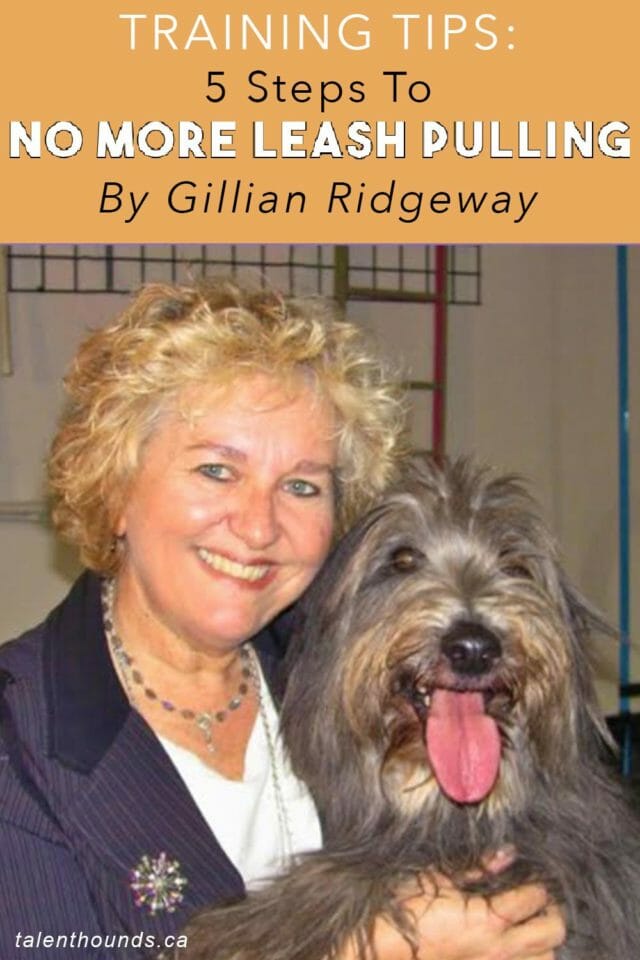
Leash pulling can make walking your dog a challenge, but it doesn’t have to be!
The inability to control one’s dog on a walk can be very frustrating and even dangerous. Kilo has improved so much but he still often pulls like a bandit if he gets stressed. Simply tugging on the leash, or saying “heel” over and over teaches your dog nothing. Proper leash training will help keep your dog safe and allows you to control your dog, even if he or she becomes agitated or excited (like when a squirrel runs past!).
Positive reinforcement training mantra: “The more a behaviour is rewarded, the more likely it is to occur.”
Positive reinforcement training is when you reward a dog for doing something right- whether it is with a new toy, treats or cuddles or even a walk- rather than chastising them for doing something incorrectly.
Use a technique that is both force-free and motivational when training.
You want to make safe walking a positive experience for your dog. This will help make your dog excited to go for a walk and be rewarded for good behaviours.
A properly fitting collar or harness.
Before heading out on a walk make sure you get a properly fitting collar or harness.
Properly fitting a collar to your dog depends on the size of the dog. For dogs under twenty pounds, use your pinky finger to check the collar; for dogs over twenty pounds, use your first two fingers to check the collar.
First check to see how much you need to adjust the collar. Slide your finger(s) under your dog’s collar. You should be able to fit two fingers (pinky finger for smaller dogs) under the collar comfortably without having excess room If you cannot fit your finger(s) under the collar, loosen the collar; if you have too much room between the collar and your dog’s neck, tighten the collar.
The same principles stand when fitting a harness correctly. If you can slip two fingers under all the straps of the harness, it is fitted comfortably.
For growing puppies, you will want to check the collar weekly to make sure that the collar is not getting too tight. If you are having trouble fitting your dog for a collar or harness, or if you have more questions, contact your veterinarian or dog trainer.
Gillians’ 5 Steps to a Fun walk without Leash Pulling!
Step 1: Pick a calm safe place to practise – Kilo and I trained in the house at first then Pick a reinforcement zone. Try having it be your left-hand side and fairly close to your body. Using this method, you will have a dog that enjoys being on your left, not one that is forced into compliance.
Step 2: Use a marker. A marker is the consistent use of either a word (e.g. “Yes”) or a clicker to indicate to your dog a correct behaviour. With the dog in the reinforcement zone, mark the behaviour verbally or with the clicker and REWARD!
I actually put peanut butter on a wooden spoon and led Kilo where I wanted him to walk which worked really well as I didn’t have to bend down to reward him.
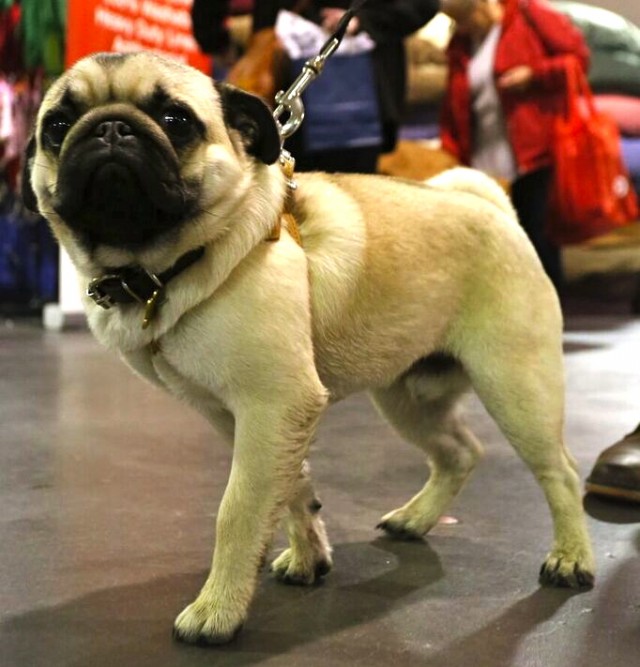
Step 3: Take a step forward and say yes/treat again. Continue marking the dog’s behaviour for each step. Once the dog becomes proficient, mark the behaviour every two or three steps, then progress to multiple steps. They catch on quick!
Step 4: Once the dog is walking without pulling, add a marker word that means “walk beside me” – such as “heel” – before you begin walking. Remember to reward for good behaviour!
Step 5: Now switch it up! Try outside in an easy area. Add turns, stops and starts to maintain the dog’s interest during the training phase.
Also, you can help leash-train your dog by giving him or her enough slack, and praising them when they head in the right direction.
Remember : Patience while training. Lots of encouragement and rewarding for correct behaviour will help your dog to learn faster.
The results won’t come overnight, but the effort you’ve put into this aspect of your dog’s training will be plainly seen further on down the road (quite literally) And that’s your reward.

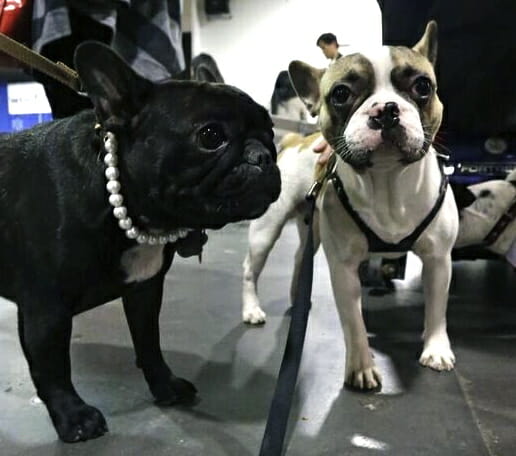
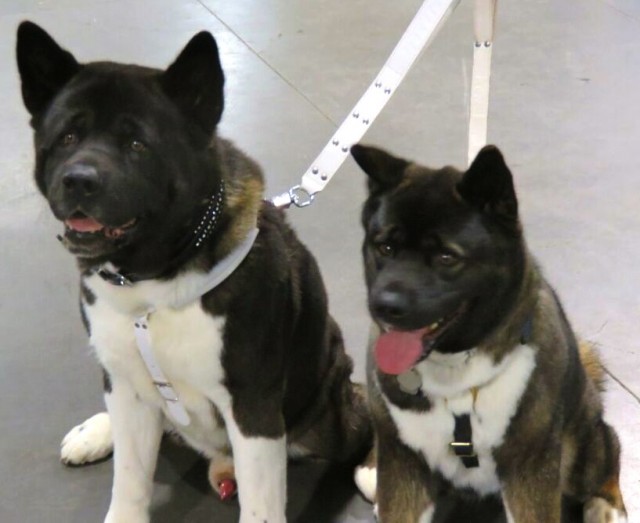
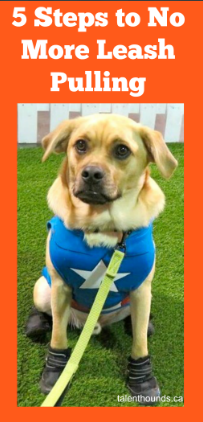

This is a great post! Loose leash walking is the most difficult behavior to train because it is the toughest for us humans to be consistent on. But practicing in a quiet/easy place, going slow, and remaining patient and positive really can make all the difference. Thanks for joining the Positive Reinfircement Pet Training hop!
I never thought it would happen, but I’ve even got our golden retriever (at 11 years old) walking better on the leash! She still has her times when she pulls but she has really made a lot of progress. My biggest problem is that I just don’t practice enough. We tend to play in the yard more than we walk, so they get so excited about walking that it’s hard to calm them down!
For us, the real breakthrough with improving Isis’s pulling was the clicker. I’d tried giving her treats before, but then she’d just charge on ahead again. The clicker finally communicated to her that I wanted her to stay right next to me.
I used the be a tree method with Mr. N. It took a TON of patience though. I think it took a week or two of stopping every single time he pulled. Those were very slow walks.
Nice tips!! Jada is still pulling but she is doing better 🙂
What a great reminder! Two of our goldens use a gentle leader but our youngest just isn’t adapting well to it. He doesn’t jump while walking, he just likes to pull. think I’m going to have to switch to more of a harness type leash and see if that helps.
Great information! I will be sharing with my daughter for her pup.
I really like the peanut butter on a wooden spoon method, that would definitely make marker the behavior much easier! Great training tip.
Love & Biscuits,
Dogs Luv Us and We Luv Them
I have absolutely used the wooden spoon trick with peanut butter for this and other training techniques. Thanks for sharing!